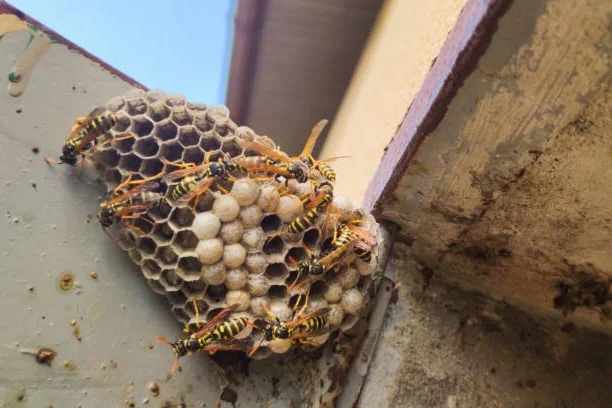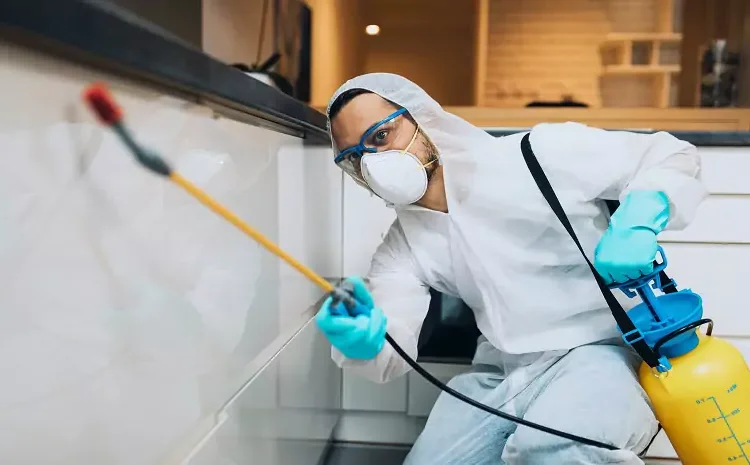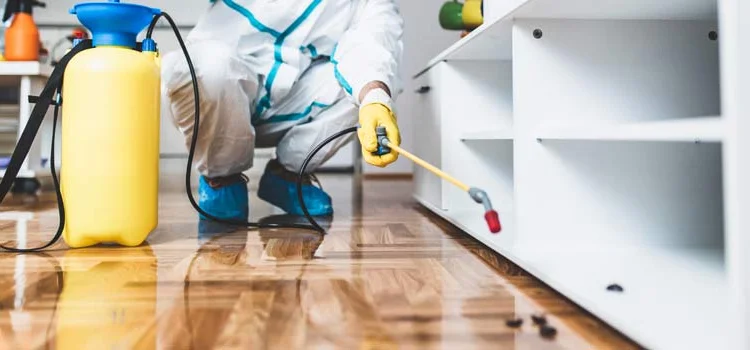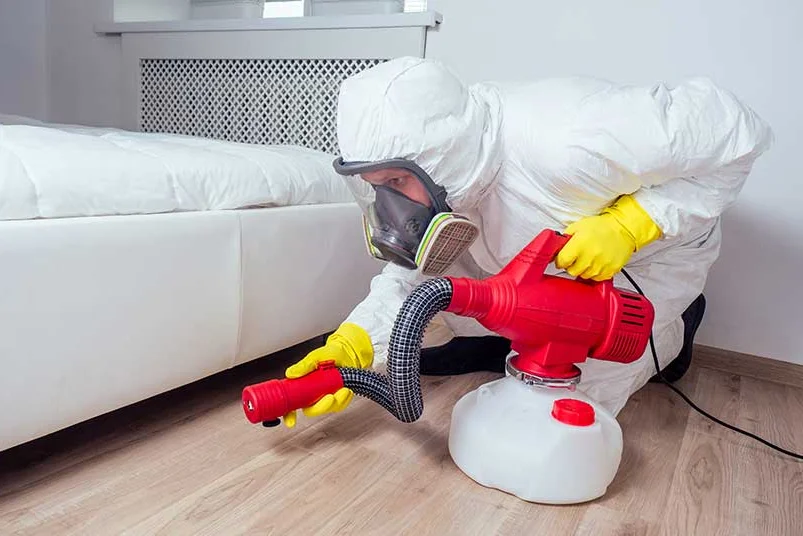Stinging insects pose serious safety threats that go far beyond simple discomfort – they can trigger life-threatening allergic reactions and create dangerous situations around homes, schools, and businesses. Stinging insects control requires specialized expertise that understands the behavior, nesting habits, and appropriate removal techniques for different species while prioritizing the safety of family members and beneficial pollinators. From aggressive yellow jackets defending ground nests to hornets building massive aerial colonies, these insects can quickly transform peaceful outdoor spaces into hazardous areas that restrict normal activities and threaten vulnerable individuals.
Professional stinging insect management combines species identification, risk assessment, and targeted removal strategies that eliminate threats while protecting beneficial bee populations essential for environmental health. Unlike general pest control, bee and wasp removal demands understanding of insect behavior, proper safety equipment, and specialized techniques that ensure complete nest elimination without provoking defensive swarms that could endanger nearby residents. Effective stinging insect control protects families from immediate sting risks while preventing future nesting that could create ongoing safety concerns throughout active seasons.
Don't risk dangerous stings! Get professional stinging insects control
URGENT same-day removal for safety threats.
Schedule immediate inspection today!
Understanding Stinging Insects and Safety Risks
Effective stinging insect control requires understanding the different species, their behaviors, and the varying levels of threat they present to human safety. Each type of stinging insect presents unique challenges and requires specific approaches:
-
Aggressive defensive behavior Many stinging insects become extremely aggressive when defending their nests, with some species capable of pursuing threats for considerable distances and coordinating group attacks that can overwhelm victims.
-
Multiple sting capability Unlike honeybees that die after stinging once, wasps, hornets, and yellow jackets can sting repeatedly, injecting venom with each attack and increasing the severity of reactions in sensitive individuals.
-
Seasonal activity patterns Stinging insect aggression typically peaks in late summer and early fall when colonies are largest and food sources become scarce, making encounters more frequent and dangerous during these periods.
-
Nest location variations Different species build nests in various locations from underground burrows to high tree branches, wall voids, and structural cavities, requiring different removal approaches and safety considerations.
-
Allergic reaction risks Stinging insect venom can trigger severe allergic reactions including anaphylaxis, which can be life-threatening and requires immediate medical attention, making prompt nest removal essential for safety.
-
Beneficial vs pest species Some stinging insects like honeybees are beneficial pollinators that should be relocated rather than eliminated, while others like yellow jackets are primarily pests that require removal for safety.
Understanding these factors enables professional pest control specialists to develop appropriate removal strategies that prioritize safety while addressing the specific challenges presented by different stinging insect species and nesting situations.
Common Stinging Insects and Their Threats
Different stinging insect species present varying levels of threat and require specific control approaches. Understanding these common species helps homeowners recognize dangers and seek appropriate professional intervention:
Yellow Jackets
Professional removal of aggressive yellow jacket nest requiring specialized safety equipment
Yellow jackets represent one of the most aggressive and dangerous stinging insects commonly encountered around homes and businesses. These wasps build nests in ground cavities, wall voids, and structural spaces, often creating hidden colonies that can house thousands of aggressive defenders by late summer.
Yellow jackets are particularly dangerous because they can sting repeatedly, become extremely aggressive when their nest is threatened, and are attracted to food and sugary drinks during outdoor activities. Their ground nests are often accidentally disturbed by lawn mowing or foot traffic, triggering mass attacks that can result in multiple stings and serious medical emergencies.
Hornets
Large hornet nest requiring professional removal with specialized protective equipment
Hornets build large, paper-like nests typically located in trees, shrubs, or under eaves and overhangs. These impressive structures can grow to the size of basketballs and house hundreds of large, aggressive hornets that deliver particularly painful stings with significant amounts of venom.
European hornets and bald-faced hornets are common species that become increasingly aggressive as their colonies mature through the summer months. Their size, aggression, and painful stings make professional removal essential for safety, particularly when nests are located near high-traffic areas or entrances.
Paper Wasps
Paper wasp nest removal from common residential nesting locations
Paper wasps build distinctive umbrella-shaped nests under eaves, overhangs, and protected areas around homes. While generally less aggressive than yellow jackets or hornets, paper wasps will defend their nests vigorously and can deliver painful stings to perceived threats.
These wasps are beneficial predators that help control other pest insects, but their nesting locations around homes often create safety concerns, particularly when nests are built near doorways, windows, or areas where children play. Professional removal ensures safety while minimizing environmental impact.
Honeybees
Honeybees are beneficial pollinators that generally exhibit docile behavior unless directly threatened or defending their hive. However, honeybee colonies that establish in wall voids, attics, or other structural spaces can create problems that require professional intervention and preferably relocation rather than elimination.
Africanized honeybees, found in southern regions, are significantly more aggressive than European honeybees and can pursue threats for extended distances. Professional identification and appropriate response are essential when dealing with any honeybee colony, particularly those exhibiting aggressive behavior.
Mud Daubers and Solitary Wasps
Mud daubers and most solitary wasps are generally non-aggressive and rarely sting unless directly handled. However, their nesting activities can create aesthetic concerns and their presence may indicate conditions favorable to more dangerous stinging insects.
While these insects typically don't require emergency removal, professional assessment can help determine whether treatment is necessary and identify any conditions that might attract more problematic stinging insect species to the property.
Professional Removal and Safety Approaches
Professional stinging insects control prioritizes safety through specialized equipment, proper techniques, and comprehensive risk assessment that protects both technicians and nearby residents. Effective removal requires understanding insect behavior, appropriate timing, and specialized tools that ensure complete nest elimination without provoking dangerous defensive responses.
Professional services use commercial-grade protective equipment, specialized treatment products, and proven removal techniques that minimize risks while ensuring complete elimination of stinging insect threats around homes and businesses.
Safety-First Approach
Our stinging insect removal services prioritize the safety of your family, pets, and our technicians through proper protective equipment, safe removal techniques, and comprehensive risk assessment that ensures effective elimination without dangerous encounters.
Here's a comparison of different stinging insect removal approaches and their safety considerations:
| Removal Method |
Safety Level |
Best Applications |
| Professional Chemical Treatment |
Highest safety; specialized equipment; proven effectiveness; minimal exposure risk.
|
Aggressive species; large nests; high-traffic areas; individuals with sting allergies nearby.
|
| Physical Nest Removal |
High safety with proper equipment; immediate threat elimination; complete nest removal.
|
Accessible nests; dormant season removal; structural nest locations requiring complete elimination.
|
| Honeybee Relocation |
Specialized safety requirements; beneficial conservation; professional expertise required.
|
Honeybee colonies; environmentally conscious removal; beneficial pollinator preservation.
|
| Exclusion and Prevention |
Preventive safety; long-term protection; minimal immediate risk.
|
Post-removal prevention; seasonal preparation; ongoing protection from future nesting.
|
| Emergency Response |
Immediate threat elimination; rapid response; comprehensive safety protocols.
|
Active aggression; sting emergencies; immediate safety threats requiring urgent intervention.
|
The appropriate approach depends on species identification, nest location, colony size, proximity to human activity, and individual safety considerations including known allergies or vulnerable populations.
Emergency Response and Sting Safety
Immediate Response Protocols
Stinging insect emergencies require immediate professional response to prevent serious injuries and protect vulnerable individuals from potentially life-threatening encounters. Emergency situations include active aggressive behavior, nests near high-traffic areas, and any situation involving individuals with known sting allergies.
Professional emergency response includes rapid assessment, immediate threat containment, and safe removal techniques that eliminate dangers without escalating aggressive behavior or creating additional safety risks for nearby residents.
Recognizing Medical Emergencies
Stinging insect encounters can trigger serious medical emergencies including anaphylactic shock, which requires immediate medical attention. Warning signs include difficulty breathing, swelling of face or throat, rapid pulse, dizziness, and widespread hives or rash following stings.
Individuals with known insect sting allergies should seek immediate professional nest removal and carry prescribed emergency medications. Professional removal prevents dangerous encounters that could trigger life-threatening allergic reactions in sensitive individuals.
Protecting Vulnerable Populations
Children, elderly individuals, and people with compromised immune systems face increased risks from stinging insect encounters. Professional removal is particularly important when nests are located near schools, playgrounds, or areas where vulnerable populations spend time.
Emergency response protocols prioritize protecting these vulnerable populations through rapid nest elimination and safety measures that prevent accidental encounters during removal activities.
Protect your family from dangerous stings! Get immediate professional bee and wasp removal
Contact emergency services for same-day threat elimination!
Prevention and Long-Term Management
Nest Prevention Strategies
Effective stinging insect prevention focuses on eliminating nesting opportunities and reducing attractants that draw these insects to residential and commercial properties. Prevention strategies include structural modifications, habitat management, and proactive treatments that discourage nest establishment.
Professional prevention programs identify potential nesting sites, implement exclusion measures, and provide ongoing monitoring that detects early nesting activity before colonies can establish and become dangerous threats to property occupants.
Structural Modifications
Preventing stinging insect nesting often requires structural modifications that eliminate access to preferred nesting sites. This includes sealing gaps in eaves and soffits, covering vents with appropriate screening, and eliminating access to wall voids and attic spaces.
Professional assessment identifies vulnerable areas and recommends modifications that reduce nesting opportunities while maintaining proper ventilation and structural integrity of buildings and landscapes.
Landscape Management
Landscape management plays a crucial role in reducing stinging insect attraction and nesting opportunities. This includes managing flowering plants that attract insects, eliminating standing water sources, and maintaining vegetation that doesn't provide ideal nesting sites.
Professional landscape recommendations balance the benefits of pollinator-friendly plants with the need to minimize dangerous stinging insect attraction, particularly in areas where children play or families gather for outdoor activities.
Dangers of DIY Stinging Insect Removal
Serious Safety Risks
DIY stinging insect removal attempts frequently result in serious injuries, emergency room visits, and situations that become more dangerous than the original nest. Amateur removal attempts often provoke massive defensive responses that can result in multiple stings and life-threatening encounters.
Professional removal eliminates these risks through proper protective equipment, proven techniques, and understanding of insect behavior that enables safe, effective nest elimination without provoking dangerous defensive swarms.
Critical Warning
Never attempt to remove stinging insect nests yourself. Professional removal prevents serious injuries, emergency medical situations, and legal liability that can result from DIY attempts that go wrong or affect neighboring properties.
Common DIY Mistakes
-
Inadequate protective equipment Household clothing and improvised protection cannot prevent stings from aggressive defending insects, leading to multiple stings and potential allergic reactions.
-
Wrong timing and approach Amateur attempts often occur during peak activity periods when insects are most aggressive, increasing the likelihood of defensive attacks and injury.
-
Incomplete nest elimination Partial removal attempts often leave surviving insects that rebuild nests in the same location or establish new colonies nearby, perpetuating the safety threat.
-
Inappropriate products and methods Consumer-grade sprays and home remedies are ineffective against established colonies and may agitate insects without eliminating the threat.
-
Failure to identify species Different stinging insects require different approaches, and misidentification can lead to inappropriate removal attempts that escalate danger.
Professional removal avoids these dangerous mistakes through proper identification, appropriate timing, specialized equipment, and proven techniques that ensure safe, complete elimination of stinging insect threats.
Seasonal Stinging Insect Management
Early Season (March-May)
- Queen emergence and nest initiation
- Small colony elimination opportunities
- Prevention treatment applications
- Nest site monitoring and exclusion
Focus: Prevent nest establishment through early detection and elimination of founding queens and small colonies.
Active Season (June-August)
- Colony growth and expansion
- Professional removal requirements
- Safety monitoring and assessment
- Ongoing prevention maintenance
Focus: Professional removal of established colonies while maintaining safety and preventing new establishment.
Peak Danger (September-November)
- Maximum colony size and aggression
- Increased human encounters
- Emergency response protocols
- Food source management
Focus: Emergency response for dangerous situations and preparation for winter colony die-off.
Dormant Period (December-February)
- Colony die-off and nest abandonment
- Structural nest removal
- Prevention planning and preparation
- Exclusion work and modifications
Focus: Safe removal of abandoned nests and prevention preparation for the upcoming season.
Legal and Insurance Considerations
Liability Protection
Property owners face significant liability risks when stinging insect nests on their property injure visitors, neighbors, or service workers. Professional removal provides liability protection through proper documentation, insurance coverage, and elimination of dangerous conditions that could result in injury claims.
Professional services include comprehensive liability insurance, proper documentation of removal activities, and follow-up verification that ensures complete elimination and reduces ongoing liability exposure for property owners.
Insurance Coverage Benefits
Many homeowner's insurance policies cover professional stinging insect removal, particularly when nests pose immediate safety threats or are located in structural areas that could cause property damage. Professional documentation supports insurance claims and demonstrates due diligence in addressing safety hazards.
Professional removal also prevents costly liability claims that could result from injuries to visitors, neighbors, or service workers who encounter dangerous stinging insect nests on your property.
Regulatory Compliance
Professional stinging insect removal ensures compliance with local regulations regarding pesticide use, worker safety, and environmental protection. Licensed professionals understand regulatory requirements and use approved methods that meet all applicable standards.
Compliance includes proper disposal of nests and dead insects, appropriate use of control products, and documentation that demonstrates adherence to all relevant regulations and safety standards.
Stinging Insect Removal Success Stories
"PestControl100 saved our family barbecue when they removed a massive yellow jacket nest from our deck area within hours of our call. The technician was professional, safe, and completely eliminated the threat so we could enjoy our outdoor space again."
- Robert Chen, Homeowner
★★★★★
"We discovered a hornet nest in our child's play area and called for emergency removal. The response was immediate, and they safely eliminated the nest without any family members getting stung. Professional service that gave us peace of mind."
- Maria Rodriguez, Parent
★★★★★
"As someone with severe bee sting allergies, having a nest near our front door was terrifying. The professional removal was quick, safe, and thorough. They also provided prevention recommendations that have kept us sting-free for two years."
- Jennifer Thompson, Allergy Sufferer
★★★★★
Frequently Asked Questions
How quickly can you respond to emergency stinging insect situations?
We provide same-day emergency response for dangerous stinging insect situations, typically within 2-4 hours of your call. Emergency situations include active aggressive behavior, nests near high-traffic areas, and any situation involving individuals with known sting allergies. Our technicians carry specialized safety equipment for immediate threat elimination.
Is stinging insect removal safe for my family and pets?
Professional removal is the safest approach for eliminating stinging insect threats. Our technicians use specialized protective equipment and proven techniques that eliminate nests without creating additional dangers. We provide safety instructions and appropriate clearance times to ensure your family and pets are protected throughout the removal process.
Do you relocate honeybees instead of eliminating them?
When possible, we work with local beekeepers to relocate honeybee colonies rather than eliminate these beneficial pollinators. However, relocation depends on species identification, colony health, accessibility, and local beekeeper availability. Aggressive Africanized bees may require elimination for safety reasons.
What should I do if someone gets stung during nest removal?
Seek immediate medical attention for anyone experiencing severe allergic reactions including difficulty breathing, swelling, or widespread rash. For normal sting reactions, remove stinger if present, apply ice, and monitor for signs of allergic response. Our technicians are trained in emergency response and carry first aid equipment during removal operations.
Stinging Insect Safety Resources
Emergency Response Protocols
Immediate response procedures for dangerous stinging insect encounters including safety measures, emergency contact procedures, and first aid guidelines for sting reactions and allergic emergencies.
Allergy Management
Essential information for individuals with known sting allergies including emergency medication management, avoidance strategies, and coordination with medical professionals for comprehensive allergy protection.
Seasonal Prevention
Year-round prevention strategies including seasonal nest monitoring, property modifications, and proactive treatments that reduce stinging insect attraction and nesting opportunities around homes and businesses.
Species Identification
Comprehensive guides for identifying different stinging insect species, understanding their behavior patterns, and recognizing threat levels to help homeowners make informed decisions about professional removal needs.
First Aid and Emergency Safety
Immediate Sting Response
Proper first aid response to stinging insect encounters can prevent complications and provide relief while determining whether medical attention is necessary. Immediate response includes removing stingers if present, applying ice to reduce swelling, and monitoring for signs of allergic reactions.
Understanding the difference between normal sting reactions and allergic emergencies enables appropriate response that can save lives and prevent serious complications from stinging insect encounters.
Emergency Warning Signs
Call 911 immediately if someone experiences difficulty breathing, swelling of face or throat, rapid pulse, dizziness, widespread rash, or loss of consciousness after being stung. These may indicate life-threatening anaphylactic shock requiring immediate medical intervention.
Preventing Encounters
-
Avoid sudden movements If stinging insects are nearby, move slowly and avoid swatting or making sudden movements that could trigger defensive behavior and aggressive responses.
-
Stay away from nests Maintain distance from known or suspected nest locations, especially during peak activity periods in late summer and early fall when colonies are largest and most aggressive.
-
Wear appropriate clothing Light-colored, smooth-textured clothing is less attractive to stinging insects than dark colors or rough textures that may be perceived as threats.
-
Avoid strong scents Perfumes, scented lotions, and flowery fragrances can attract stinging insects, particularly during active foraging periods when they're seeking nectar sources.
-
Cover food and drinks Outdoor food and sugary drinks attract yellow jackets and wasps, particularly during late summer when natural food sources become scarce.
Following these prevention guidelines reduces the likelihood of dangerous encounters while professional removal eliminates nest threats that could result in serious injuries or allergic emergencies.
Environmental and Conservation Considerations
Protecting Beneficial Pollinators
Professional stinging insect management balances safety requirements with environmental responsibility, protecting beneficial pollinators while eliminating dangerous species that threaten human safety. This includes species identification, relocation when possible, and targeted removal that minimizes environmental impact.
Understanding the ecological role of different stinging insects enables appropriate responses that protect valuable pollinators while addressing legitimate safety concerns through responsible management practices.
Species-Specific Approaches
Different stinging insect species require different management approaches based on their ecological value, aggression levels, and safety threats. Honeybees and native pollinators are prioritized for relocation when possible, while aggressive species like yellow jackets typically require elimination for safety.
Professional assessment includes species identification, threat evaluation, and recommendation of appropriate management strategies that balance safety requirements with environmental conservation objectives.
Integrated Management
Comprehensive stinging insect management integrates removal of dangerous species with habitat modifications that encourage beneficial pollinators in appropriate locations away from high-traffic areas where human encounters could create safety concerns.
This balanced approach protects human safety while supporting pollinator populations essential for environmental health and agricultural productivity through strategic management that addresses both safety and conservation objectives.










